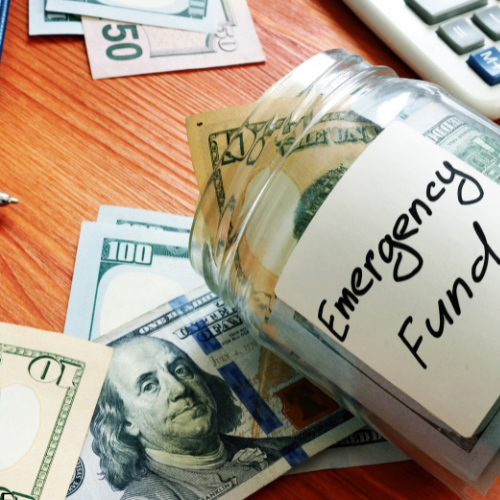Life is unpredictable, and unexpected expenses can arise at any time. Emergency fund planning is a vital step in achieving financial stability and preparing for unforeseen circumstances. A well-funded emergency reserve can help you navigate financial challenges without resorting to debt.

What is an Emergency Fund Planning?
An emergency fund is a financial safety net designed to cover unexpected expenses, such as medical bills, car repairs, job loss, or home maintenance. It provides a buffer to help you maintain financial stability during difficult times.
Why You Need an Emergency Fund Planning
- Financial Security: Reduces reliance on credit cards or loans during emergencies.
- Stress Reduction: Alleviates worry about sudden financial shocks.
- Flexibility: Allows you to handle emergencies without disrupting your long-term financial goals.
- Avoids High-Interest Debt: Prevents the need to borrow at high rates in urgent situations.
How Much Should You Save?
The recommended amount for an emergency fund varies depending on your financial situation and lifestyle:
- Basic Recommendation: Save 3 to 6 months’ worth of essential living expenses.
- Single Income Households: Aim for closer to 6 months or more.
- Dual Income Households: 3 to 6 months is generally sufficient.
- Unstable Income: Freelancers or commission-based earners may need 9 to 12 months’ worth of expenses.
Steps to Build an Emergency Fund Planning
-
Set a Goal
- Calculate your essential monthly expenses, including rent, utilities, groceries, and insurance.
- Multiply this amount by the desired number of months.
-
Start Small
- Begin with a modest goal, such as saving $1,000, and build from there.
-
Create a Budget
- Allocate a portion of your income specifically for your emergency fund.
-
Automate Savings
- Set up automatic transfers to a dedicated savings account to ensure consistency.
-
Cut Unnecessary Expenses
- Reduce discretionary spending and redirect the savings to your emergency fund.
-
Use Windfalls Wisely
- Save bonuses, tax refunds, or gifts to accelerate your progress.
Where to Keep Your Emergency Fund
- Savings Account
- A high-yield savings account offers accessibility and better interest rates than standard accounts.
- Money Market Account
- Provides slightly higher returns with easy access.
- Avoid Risky Investments
- Emergency funds should not be placed in stocks or other volatile investments due to the risk of loss.
When to Use Your Emergency Fund
- Job Loss: Cover living expenses while searching for new employment.
- Medical Emergencies: Pay for unexpected healthcare costs not covered by insurance.
- Urgent Repairs: Address essential home or car maintenance needs.
- Family Emergencies: Handle unforeseen travel or support expenses.
Tips for Maintaining Your Emergency Fund
- Replenish After Use
- Rebuild your fund immediately after withdrawing for an emergency.
- Regular Reviews
- Reassess your fund annually to ensure it aligns with your current expenses and goals.
- Avoid Temptations
- Use the fund strictly for emergencies, not for vacations or non-essential purchases.
Benefits of Having an Emergency Fund
- Peace of Mind: Knowing you’re prepared for the unexpected reduces anxiety.
- Financial Independence: Eliminates dependence on others or high-interest loans.
- Focus on Goals: Allows you to continue pursuing long-term objectives without interruption.
Conclusion
Emergency fund planning is a crucial aspect of financial health. By saving systematically and being disciplined about fund usage, you can safeguard your future and weather unexpected financial storms with confidence. Start building your emergency fund today to take control of your financial stability with DCFINSRV.
